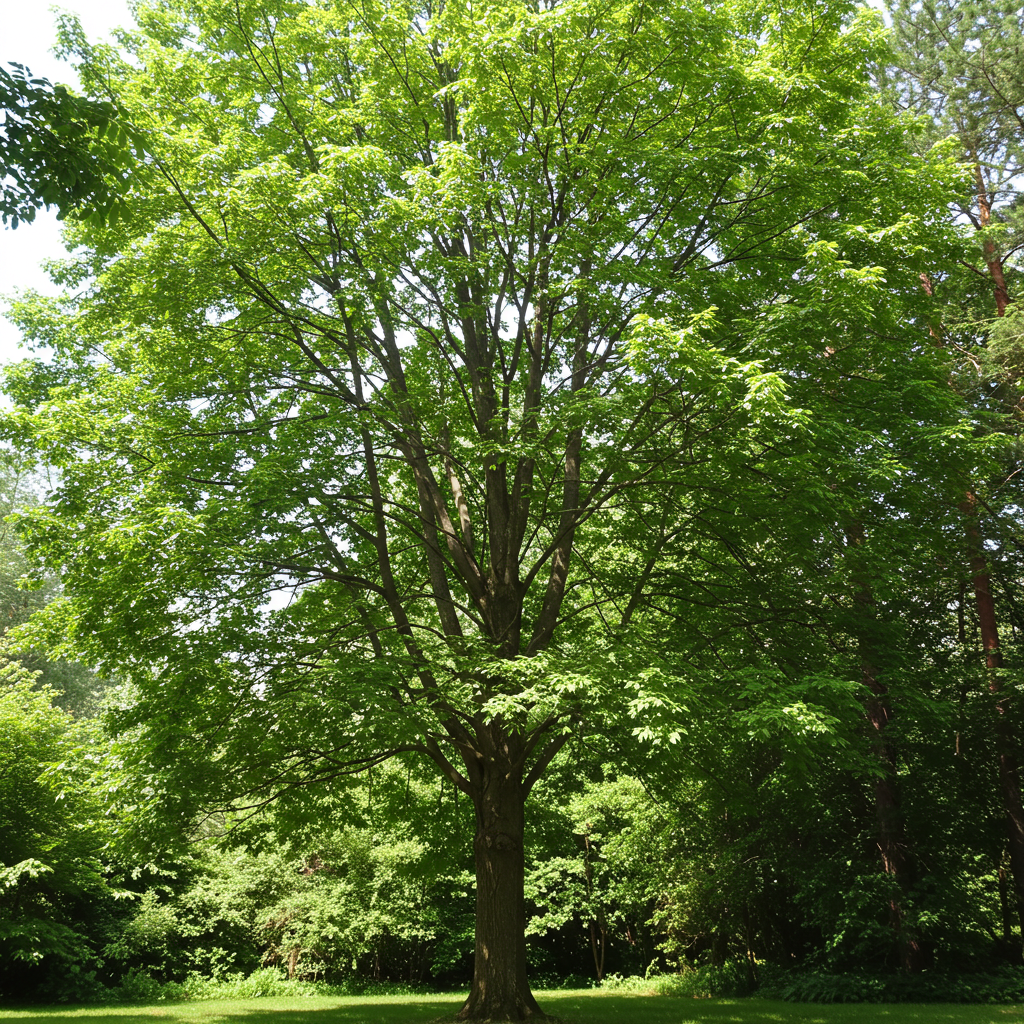Green Ash Tree Seeds
Green Ash Tree Seeds
Couldn't load pickup availability
Green Ash Tree
(Fraxinus pennylvanica)
Fraxinus pennsylvanica, commonly known as Green Ash, is a species of ash tree native to eastern and central North America.
Description:
Size: It's a medium-to-large deciduous tree, typically growing 50-70 feet (15-21 meters) tall, occasionally reaching up to 100 feet or more, with a trunk diameter of 1-2 feet (0.3-0.6 meters). It often has an irregular or rounded crown.
Leaves: The leaves are compound, oppositely arranged on the stem, and typically 6-12 inches (15-30 cm) long. Each leaf consists of 5-9 (usually 7) leaflets that are lance-shaped to ovate, pointed at the tip, finely to coarsely toothed along the margins, and green on both sides (though often slightly paler underneath). The undersides can sometimes be slightly hairy, especially along the veins. Fall color is typically yellow.
Bark: The bark is gray-brown and develops diamond-shaped ridges and furrows as the tree matures.
Flowers: Green Ash trees are typically dioecious, meaning individual trees have either male or female flowers. The small, inconspicuous, purplish-green flowers appear in clusters in spring before or as the leaves emerge. They lack petals.
Fruit: The fruit is a samara, which is a winged seed. They are paddle-shaped, 1-2 inches (2.5-5 cm) long, hang in dense clusters, and mature in late summer or early fall. They are dispersed by wind.
Native Range and Habitat:
Green Ash has one of the widest distributions of any North American ash tree. Its native range extends from Nova Scotia west to southeastern Alberta, south to northern Florida, and southwest to eastern Texas.
It's highly adaptable but commonly found in moist bottomlands, along rivers, streams, lakes, and in floodplains. It tolerates a wide range of soil conditions and can handle temporary flooding as well as drier sites.
Cultivation and Uses:
Landscaping: Due to its rapid growth, adaptability, and tolerance to various conditions (including urban environments, road salt, and different soil types), Green Ash was one of the most extensively planted landscape and street trees in North America for many decades.
Timber: The wood is hard, strong, and straight-grained, similar to White Ash (Fraxinus americana), though considered slightly inferior. It's used for tool handles, baseball bats, furniture, flooring, and pulpwood.
Windbreaks/Shelterbelts: Its hardiness made it popular for planting in windbreaks, especially in the Great Plains.
Ecological Importance:
Green Ash provides food and habitat for various wildlife. Its seeds are eaten by birds and small mammals.
It plays a role in riparian ecosystems by stabilizing stream banks
In summary, Fraxinus pennsylvanica is a historically widespread and ecologically important North American tree, valued for its adaptability and utility.
Zones: 3 to 9
Germination Range: 60-80%
Stratification Requirement: Seed required 30-60 days warm stratification followed by 60-120 days cold stratification.
Planting Instructions:
Seed Preparation:
The papery wing on the samara can be removed, but it's not strictly necessary.
Ensure the seeds are clean and free of debris or insect damage.
Breaking Dormancy (Stratification): Green Ash seeds have complex dormancy and require a period of both warm and cold moist stratification to germinate reliably. This mimics natural conditions.
Warm Stratification: Mix the seeds with a slightly damp medium like peat moss, sand, or vermiculite (aim for moist, not soaking wet). Place this mixture in a labeled, loosely sealed plastic bag or container. Keep it at room temperature (around 68-75°F / 20-24°C) for about 60 days. Check periodically to ensure the medium remains moist.
Cold Stratification: After the warm period, move the bag/container (still sealed to retain moisture) into a cold environment, like a refrigerator (around 34-41°F / 1-5°C). Keep it there for approximately 90 to 120 days. Continue checking for moisture and ensure seeds don't mold (if mold appears, rinse seeds and use fresh, slightly damp medium).
Sowing (Spring):
Timing: Sow the stratified seeds in the spring after the danger of frost has passed (usually late May or early June).
Location: Choose a site with full sun and well-drained soil.
Method: Plant seeds about 1/4 to 1/2 inch deep. You can sow them in pots filled with good quality potting mix or directly into a prepared garden bed. If planting in a bed, space them several inches apart initially.
Watering: Water the planting area gently after sowing and keep the soil consistently moist but not waterlogged during germination.
Germination and Seedling Care:
Germination can be slow and erratic, sometimes taking several weeks or longer. Be patient.
Once seedlings emerge, ensure they receive adequate water, especially during dry periods.
Protect young, tender seedlings from harsh sun, strong winds, and Browse animals (like rabbits or deer).
Seedlings can be grown in pots for a year or two before transplanting to a permanent location, or carefully transplanted from a nursery bed after they are well-established and dormant (late fall or early spring).
Share


